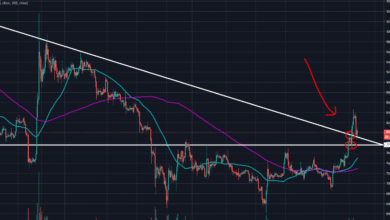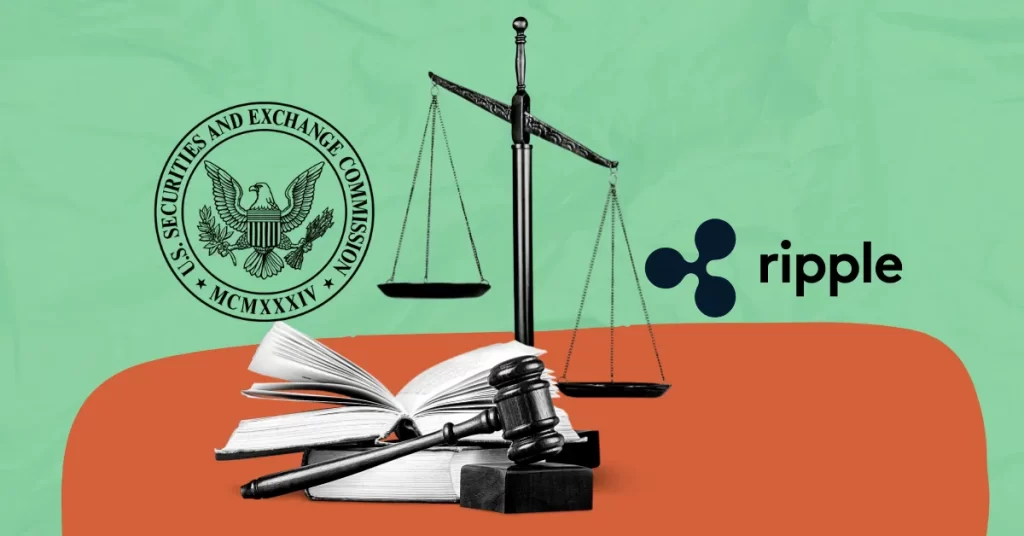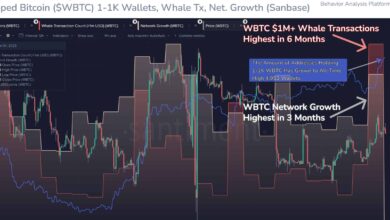
Bitcoin Price Trends: Resistance at $110,000 and Market Dynamics
Still, Bitcoin’s resistance key actor in the often-changing terrain of cryptocurrencies, Bitcoin’s resistance controls most of the market’s movements. The Cryptocurrency Market is experiencing a decline today; Bitcoin is attempting to overcome notable resistance near the $110,000 level. Since this event highlights the erratic nature of the market, traders, analysts, and investors have sparked numerous conversations about it.
Bitcoin Price Trends and Resistance
Often referred to as digital gold, bitcoin has evolved in the modern financial environment into a symbol of both riches and risk. Its price is determined by a confluence of elements, including market demand, institutional acceptance, geopolitical events, technological developments, and macroeconomic situation. Although it has surged rapidly in the past decade, Bitcoin remains somewhat vulnerable to fluctuations, so its path is significantly influenced by resistance levels—places where the price struggles to break through.
From retail investors to big institutional corporations, a variety of market players affect the price behavior of Bitcoin. Bitcoin encounters opposition as it approaches specific price levels, particularly those with historical significance. Regarding the $110,000 mark, this resistance has proven to be a substantial obstacle preventing Bitcoin from rising above this level in the current market cycle.
Bitcoin’s Resistance at $110,000
Examining the past of Bitcoin’s fluctuations helps one to grasp why it is encountering resistance at $110,000. Driven by speculative trading, market sentiment, and broader economic conditions, Bitcoin has experienced several boom-and-bust cycles over the years. Bitcoin has frequently reached specific pricing levels during periods of rapid expansion that serve as psychological deterrents for investors. Analyzers and traders regularly monitor these levels since they are important turning points that can indicate a change in market direction.

Notably, the $110,000 resistance level is especially significant, as it represents a major psychological hurdle. In the past, Bitcoin has fluttered around this level; every time it fails to break through, the price falls. These failed attempts to surpass the $110,000 barrier have made the market cautious, as many traders are reluctant to raise the price without clear signs of continuous increasing momentum.
Impact of Economic Uncertainty on Cryptocurrency Markets
The state of the global economy significantly impacts the markets for cryptocurrencies. Investors often become more risk-averse during times of economic uncertainty—that is, when faced with inflationary pressures, rising interest rates, or geopolitical turmoil. This has been particularly evident in recent months, as concerns about inflation and the tightening of monetary policy have reduced risk appetite for several asset types, including cryptocurrency.
The crypto market has undergone significant changes following the US Federal Reserve’s decision to hike interest rates to curb inflation. Higher interest rates make conventional investments—such as bonds and equities—more appealing, which attracts investors to take money from riskier assets like Bitcoin. This change in market dynamics has exerted downward pressure on the price of Bitcoin, preventing it from surpassing the $110,000 resistance.
Regulatory Uncertainty and Its Impact on Bitcoin Investment
Still, a big challenge for Bitcoin and the broader cryptocurrency economy is regulatory clarity—many nations’ authorities will struggle with categorizing and controlling digital assets. The absence of a defined legislative framework has left investors uncertain, as potential government interventions or crackdowns could significantly devalue Bitcoin and other cryptocurrencies.
For example, recent debates on stricter rules in major markets like the European Union and the United States have sparked questions about the direction of Bitcoin. The possibility of more scrutiny and regulation worries investors, who can therefore lose trust and slow down institutional adoption.
Market Sentiment and Volatility in Bitcoin’s Price
The price swings of Bitcoin depend much on the market mood. Thanks to speculative trading and investor optimism, Bitcoin has experienced significant value fluctuations in the past. These demonstrations, however, are sometimes fleeting, as their motivation is more hype and speculation than basic elements.
The market is currently cautious since many investors have doubts about the future of Bitcoin. For both bulls and bears, the $110,000 resistance level has gained central focus, driving increased volatility. Bitcoin struggled to maintain upward momentum as more traders took profits or hedged their positions, resulting in the current declining trend in the market.
Impact of Institutional Investors on Bitcoin’s Market
The price of Bitcoin has been shaped significantly in by institutional investors. Insiders like MicroStrategy, Tesla, and Grayscale have made significant Bitcoin investments, indicating a movement toward general acceptance of the digital commodity. Although institutional interest in Bitcoin has lent the coin some validity, it has also presented new challenges.

Larger, more complex portfolios and a more cautious approach to price levels and resistance points characterize institutional investors. Institutional investors are likely considering the risks and benefits of driving the price higher as Bitcoin approaches the $110,000 resistance. The larger scale of institutional investments means that their decisions can have a more pronounced impact on the market.
Factors Influencing Bitcoin’s Future Price and Demand
Every investor wonders what direction Bitcoin’s Path will take from here. Although the $110,000 resistance has proven to be a challenging obstacle to various factors could affect the pricing in the following weeks and months. Faster transactions and improved Bitcoin scalability, made possible by technological developments—including the ongoing development of the Bitcoin Lightning Network—may help increase demand.
Furthermore, should world economic conditions improve, inflation come under control, and interest rates stabilise, Bitcoin may experience a fresh surge in interest from both institutional and retail players. Its price might also be driven higher by positive legislative developments and growing acceptance of Bitcoin as a store of value or means of exchange.
Final thoughts
The current decline in the crypto market, along with wiBitcoiwith Bitcoin’sestrugglek the $110,000 resistance level, highlights the dynamic and multifaceted nature of the Bitcoin market. Although Bitcoin has come a long way in proving itself as a valid asset class, it remains somewhat vulnerable to various elements, including macroeconomic conditions, market sentiment, and legal uncertainty. Carefully navigating these obstacles, investors and traders should closely monitor essential resistance levels and market signals to inform their decisions.







